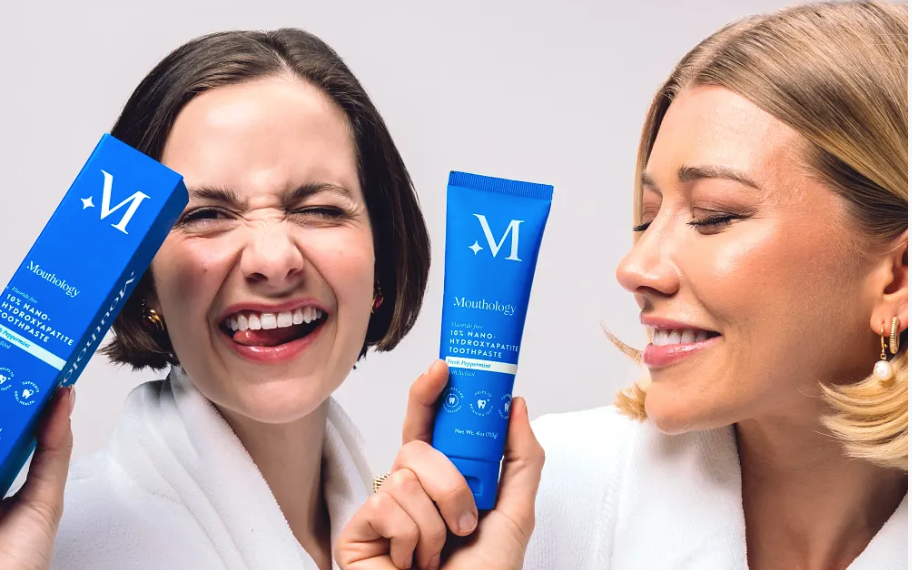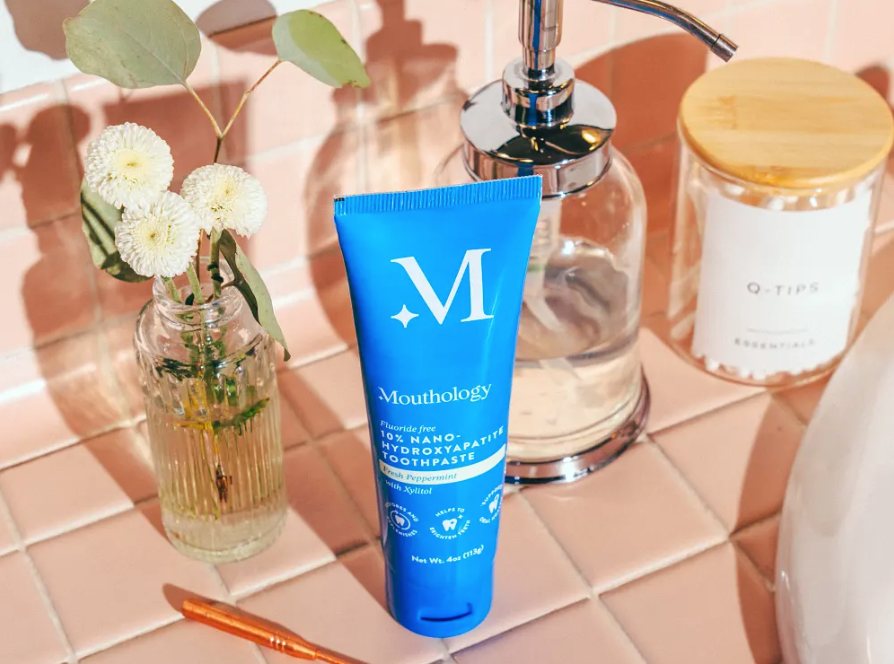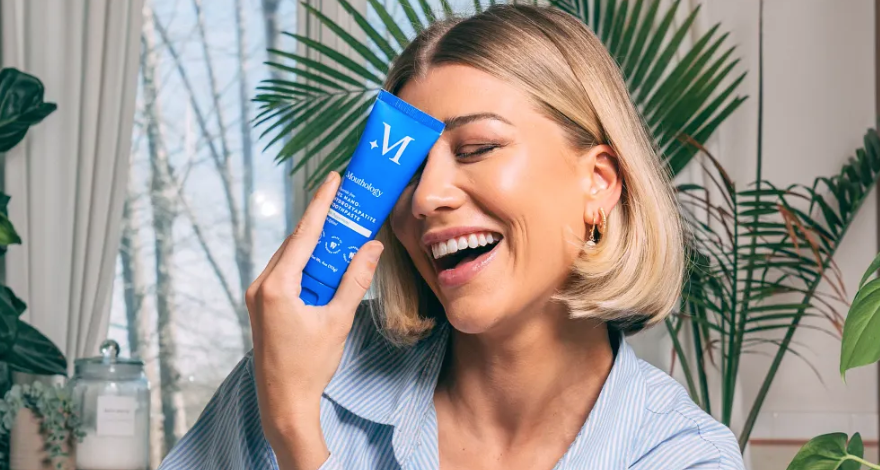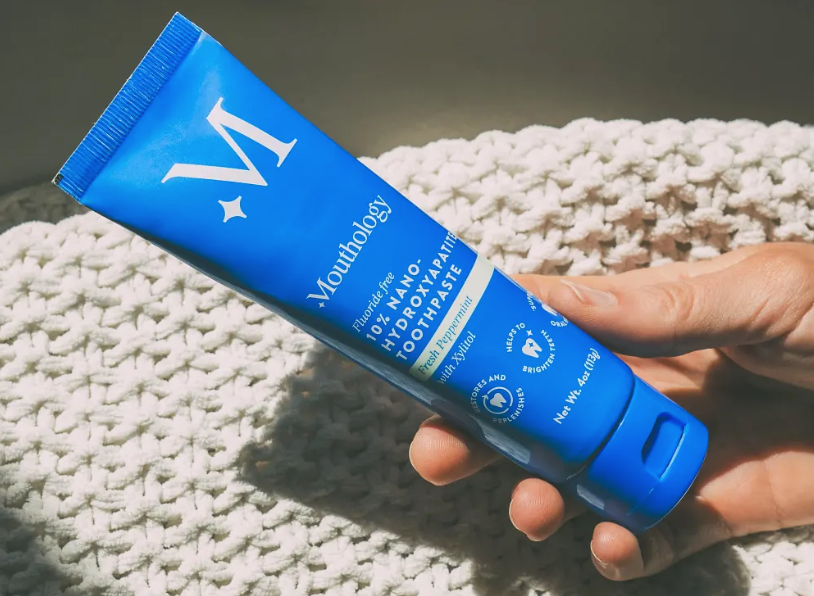Finding the right toothpaste for your little ones can feel like a daunting task. With so many options out there, how do you choose one that’s not only effective but also appealing to their taste buds? The right kids' toothpaste can make brushing a fun experience while ensuring strong teeth and healthy smiles.
Fluoride is a key ingredient recommended by dental professionals for cavity prevention. However, if your child is still learning to spit, a fluoride-free option might be more suitable. With the American Dental Association's Seal of Acceptance guiding your choices, you can confidently navigate the world of kids' toothpaste. Let’s dive into some of the best options available that cater to different preferences and needs, ensuring your child enjoys every brushing session.
Safe and Effective Options for Tiny Teeth
Choosing the right toothpaste for your child is essential for maintaining dental health. Several safe and effective options cater to different age groups and preferences.
Fluoride Toothpaste
Fluoride toothpaste plays a vital role in preventing dental cavities. Children aged 2 years and older can benefit from fluoride, as it helps strengthen teeth. Ensure you supervise your child’s brushing, guiding them to use a pea-sized amount. Look for products that carry the American Dental Association's Seal of Acceptance, indicating they meet strict safety and efficacy standards.
Fluoride-Free Toothpaste
For children under 2 years of age, fluoride-free toothpaste is often recommended unless directed otherwise by a dentist or doctor. These options offer a gentle cleaning experience while your child learns to spit. Choose flavors appealing to young ones to encourage regular brushing.
Considerations for Kids Aged 2-6
Kids between 2 and 6 may require additional support during their brushing routine. Instruct them in good brushing and rinsing habits to minimize swallowing toothpaste. Supervise their brushing sessions, ensuring they’re using the correct amount. Some brands provide fun packaging and kid-friendly flavors to engage your child during this process.
Safety Precautions
Keep all toothpaste products out of reach of children under 6 years. If your child accidentally swallows more than the recommended amount, seek medical help or contact a Poison Control Center.
Selecting the appropriate toothpaste can make a significant difference in your child's oral health. With the right options, brushing can become a fun and rewarding experience.
Taking care of your child's smile
Choosing the right toothpaste contributes significantly to your child's dental health. Prioritize the use of fluoride toothpaste for children aged 2 years and older. Fluoride fights cavities and strengthens tooth enamel, helping to keep smiles healthy. Always supervise brushing sessions and use a pea-sized amount to ensure proper techniques.
For younger children under 2 years, pick fluoride-free toothpaste. These options still provide effective cleaning while being safe for kids who may swallow toothpaste. Encourage good brushing habits early to establish a lifelong routine.
When it comes to kids aged 2-6, supervision remains essential. Teach them to use a small amount of toothpaste and remind them not to swallow it. Make brushing enjoyable by incorporating fun activities or songs. This approach helps create positive associations with oral care.
Consider the American Dental Association's Seal of Acceptance when selecting toothpaste. This seal guarantees safety and effectiveness, making it easier to make informed choices. Ensure that toothpaste remains out of reach of young children to prevent accidental ingestion. Monitor any signs of excessive swallowing, and contact a healthcare professional if necessary.
Involve your child in the process of choosing toothpaste. Let them pick their favorite flavor or character on the packaging. Engaging them in this way fosters excitement about oral hygiene and encourages regular brushing. Making dental care a family routine not only supports health but also strengthens the bond between you and your child.
When Can Babies Use Toothpaste?
You can start using toothpaste for babies as soon as their first tooth emerges. The American Academy of Pediatric Dentistry recommends utilizing a tiny smear of fluoride toothpaste, about the size of a grain of rice, for infants once their initial teeth appear. This practice helps in building a foundation for good oral hygiene and gets your child accustomed to the brushing routine from an early age.
For children under 3 years, using fluoride-free toothpaste can be beneficial, as it allows you to focus on instilling good brushing habits without concerns about swallowing. Products like Crest Baby Training Toothpaste, which features a mild flavor, can encourage babies to accept brushing. This type of training toothpaste aids in gently cleaning their delicate gums and baby teeth.
Once your child turns 3 years old, it’s appropriate to transition to a fluoride toothpaste. Fluoride helps to remineralize teeth, strengthening enamel and protecting against cavities. Many brands, including Crest Kids with Fluoride, offer flavors and packaging that appeal to children, promoting positive brushing experiences.
It's essential to supervise your child's brushing, ensuring they use an appropriate amount—no more than a pea-sized amount of toothpaste for children aged 3 to 6 years. Encouraging safe brushing habits early on not only protects their teeth but also makes dental care an enjoyable part of their daily routine. Involving them in the toothpaste selection process can further increase their interest in maintaining good oral hygiene.
How Much Toothpaste Should Kids Use?
You can gauge the right amount of toothpaste based on your child’s age and development.
- Under 2 years old: Use a fluoride-free toothpaste. Apply a tiny smear, about the size of a grain of rice, to a soft-bristled toothbrush. This approach minimizes the risk of swallowing while introducing your child to proper oral hygiene.
- Ages 2 to 6 years: For children in this age group, a pea-sized amount of fluoride toothpaste is appropriate. This quantity is effective in promoting cavity prevention and strengthens enamel, as suggested by the American Dental Association (ADA). Supervision is essential to ensure your child brushes effectively without swallowing toothpaste.
- Ages 6 years and older: You can continue using a pea-sized amount of fluoride toothpaste. At this stage, children usually have better control over their spitting and rinsing.
Always monitor your child while brushing and encourage the importance of not swallowing toothpaste. Keeping toothpaste out of reach prevents excessive ingestion. If any concerns arise regarding the amount of toothpaste swallowed, consult a healthcare professional for guidance.
Including children in the toothpaste selection process enhances their interest in dental care. Allow them to choose their favorite flavors, which can motivate them to brush regularly. Maintaining a routine with daily brushing reinforces good oral hygiene habits throughout their development.
What should you avoid when choosing toothpaste?
When choosing toothpaste for your child, avoid products that contain harmful ingredients.
- Fluoride levels: Look for toothpaste with an appropriate fluoride concentration. Avoid brands with less than 1000 ppm fluoride for children aged 3 and under, as they require stronger formulations for effective protection against cavities.
- Sodium lauryl sulfate (SLS): Avoid toothpaste with SLS if your child has sensitivity or allergies. SLS can cause irritation in some children, making it important to select gentle options.
- Artificial colors and flavors: Avoid formulas that include artificial dyes and flavors, which may provide little benefit and could cause allergic reactions. Choose products with natural flavors and colors to ensure a safer experience.
- Sweeteners: Stay away from toothpaste containing artificial sweeteners. While they make toothpaste more appealing, they can contribute to unhealthy habits and preferences for sweetened products.
- Non-ADA approved brands: Avoid toothpaste that lacks the American Dental Association's Seal of Acceptance. This seal indicates that the product has met stringent safety and efficacy standards.
- Excessive packaging: Avoid packaging that could be misleading. Bright colors and characters are appealing, but the focus should be on product safety and effectiveness.
Checking ingredient lists is essential for ensuring you're not selecting toothpaste with chemicals or additives that could harm your child’s health. Always prioritize quality and safety to promote good oral hygiene habits.
What are the side effects of fluoride toothpaste for kids?
Fluoride toothpaste, while beneficial for oral health, can present side effects if not used correctly. Being aware of these effects helps you make informed choices for your child's dental care.
Why did dentists stop using fluoride?
Dentists haven't universally stopped using fluoride; however, some advocate for minimizing exposure due to concerns about dental fluorosis, which results from excessive fluoride intake. Some professionals suggest limiting fluoride use for young children who may swallow toothpaste, as this can lead to white or brown spots on developing teeth. Awareness of fluoride's potential overexposure has prompted some dentists to emphasize moderation and recommend consulting with pediatric dentists for safer options tailored to individual needs.
Why do parents refuse fluoride?
Parents may refuse fluoride toothpaste due to concerns about dental fluorosis, especially in children under six who might ingest excessive amounts. Parental apprehension arises from fearing potential health risks associated with fluoride exposure. Some parents prefer fluoride-free alternatives, believing they offer a safer cleaning option while instilling good oral hygiene habits. Choosing fluoride-free toothpaste can alleviate worries about the risks of overexposure while still promoting effective dental care.
What can kids use instead of fluoride?
Parents often seek fluoride-free options for their children’s dental care. Several effective alternatives exist that can maintain oral health without exposing kids to fluoride.
- Natural Toothpaste: Look for natural toothpaste that contains ingredients like baking soda or coconut oil. These substances help clean teeth and neutralize acids.
- Herbal Toothpaste: Some brands offer herbal options, utilizing botanical extracts known for their antibacterial properties. Ingredients like chamomile and neem can support healthy gums.
- Xylitol Toothpaste: Xylitol, a natural sugar alcohol, reduces cavity-causing bacteria and promotes saliva production. Use toothpaste containing xylitol for a natural sweetness without harmful effects.
- Activated Charcoal Toothpaste: Activated charcoal toothpaste can remove surface stains and whiten teeth. While effective for adults, consult a pediatric dentist before using it on kids.
- Non-Fluoride Gel: Gel options without fluoride can be suitable, providing a gentle clean and fresh taste. Ensure that these products are safe for children and age-appropriate.
- Toothpaste for Toddlers: Non-fluoridated toddler toothpaste often contains safe, edible ingredients focusing on gentle cleaning. These types encourage good brushing habits from a young age.
When selecting any alternative, examine ingredient lists carefully. Ensure products are free of harmful substances like artificial sweeteners and colors. Consult your pediatric dentist about the best options for your child’s dental health before making a switch. Implementing a consistent brushing routine with the right toothpaste helps foster a positive attitude toward oral hygiene.
Why choose no fluoride toothpaste?
Choosing fluoride-free toothpaste can be beneficial for certain age groups, especially for children under 2. These options provide a gentle cleaning experience and reduce the risk of accidental ingestion. It's essential to establish good oral hygiene habits early without introducing fluoride, which younger children may not yet need.
Consider fluoride-free alternatives if your child has specific health concerns or allergies. Some parents prefer these formulas to avoid potential side effects, such as dental fluorosis, caused by excessive fluoride intake. By selecting fluoride-free toothpaste, you eliminate worries about fluorosis while still promoting effective brushing habits.
Fluoride-free toothpaste often features natural ingredients, like baking soda or coconut oil. These components can help remove plaque and freshen breath without the risks associated with fluoride. Additionally, many fluoride-free options are available in kid-friendly flavors that make brushing exciting for children.
When opting for non-fluoride toothpaste, look for products with the American Dental Association (ADA) Seal of Acceptance. This certification signifies that the product meets safety and effectiveness standards. Always check ingredient labels to ensure you're choosing a high-quality option.
Consult your pediatric dentist if unsure whether fluoride-free toothpaste is right for your child. They can provide personalized advice based on your child’s dental health and needs. This ensures you're making the best choice for their oral hygiene.
Key Takeaways
- Fluoride Importance: Fluoride toothpaste is essential for children aged 2 years and older as it helps prevent cavities and strengthen tooth enamel.
- Fluoride-Free Alternatives: For children under 2, fluoride-free toothpaste is recommended to ensure safety during their initial brushing years and to prevent swallowing.
- Supervision and Technique: Always supervise children's brushing, using only a pea-sized amount of fluoride toothpaste for ages 2-6, to promote proper techniques and minimize swallowing.
- ADA Seal of Acceptance: Look for toothpaste products that carry the American Dental Association's Seal of Acceptance, ensuring they meet strict safety and efficacy standards.
- Engagement and Flavor: Involve your child in choosing their toothpaste by letting them select flavors or characters, making the brushing routine more enjoyable and encouraging regular dental hygiene.
- Avoid Harmful Ingredients: Steer clear of toothpaste containing artificial colors, flavors, and excessive fluoride levels. Opt for gentle, natural options to ensure a safe brushing experience.
How to protect teeth without fluoride?
Choosing the right toothpaste for your child is vital for their dental health. By considering age-appropriate options and understanding the benefits of both fluoride and fluoride-free alternatives, you can make informed decisions. Involving your child in the selection process can make brushing exciting and enjoyable.
Always prioritize products with the ADA Seal of Acceptance to ensure safety and effectiveness. Remember to supervise your child during brushing to establish good habits and minimize any risks. With the right toothpaste and a consistent routine, you’re setting the foundation for a lifetime of healthy smiles.
Frequently Asked Questions
What age can my child start using toothpaste?
Children can start using toothpaste as soon as the first tooth emerges, typically around six months. A tiny smear of fluoride toothpaste is recommended for infants, while children under 3 should use fluoride-free options to establish good brushing habits.
How much toothpaste should I use for my child?
For children under 2, a tiny smear of toothpaste is suitable. From ages 2 to 6, a pea-sized amount is recommended. Kids aged 6 and older can also use a pea-sized amount, always supervised to avoid swallowing.
Are fluoride-free toothpaste options safe for children?
Yes, fluoride-free toothpaste can be safe and effective, especially for children under 2. These products often contain natural ingredients that help with plaque removal and freshening breath without the risk of ingestion.
How do I choose the right toothpaste for my child?
Look for toothpaste with the ADA Seal of Acceptance, and choose age-appropriate options. Avoid products with harmful ingredients, like low fluoride levels, SLS, and artificial additives. Consider your child's preferences for flavors and packaging.
What should I avoid in children's toothpaste?
Avoid toothpaste with low fluoride levels (under 1000 ppm for kids under 3), sodium lauryl sulfate, and artificial colors or sweeteners. Always check ingredient lists to ensure safety and quality for your child's dental care.
Can fluoride toothpaste have side effects?
While fluoride toothpaste is beneficial for strengthening teeth, excessive use can lead to dental fluorosis, causing discoloration in developing teeth. It's essential to supervise your child's brushing and ensure they use the correct amount.
How can I make tooth brushing fun for my child?
Involve your child in the toothpaste selection process by letting them choose their favorite flavor or packaging. Creating a consistent brushing routine and making it a family activity can turn tooth brushing into a fun and rewarding experience.




